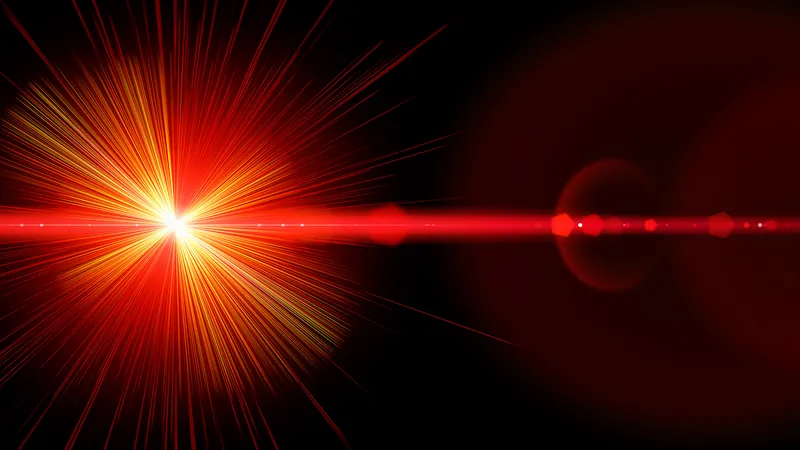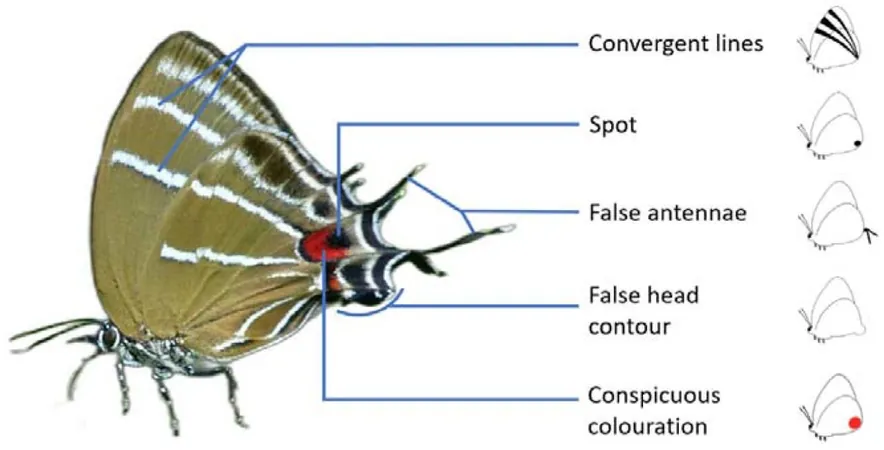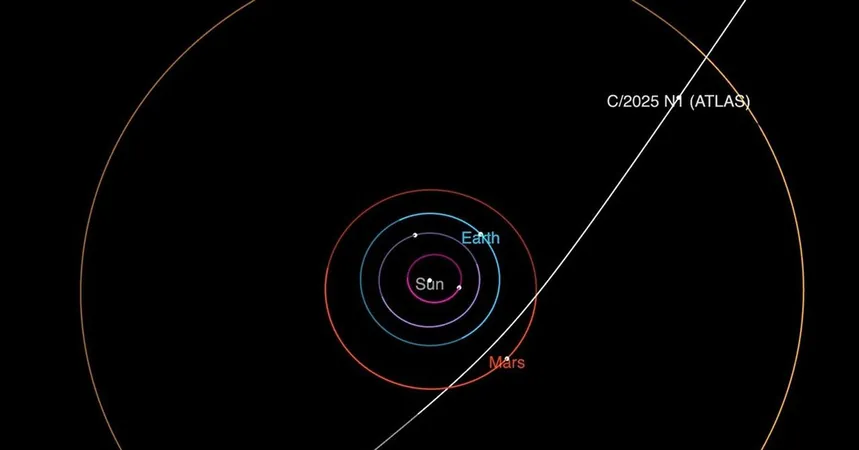
The Future of Physics: Harnessing Ultra-Intense Lasers to Unleash Astrophysical Wonders
2025-05-19
Author: Li
Revolutionizing Physics with Petawatt Lasers
Imagine a world where the mysteries of the universe could be explored right in our laboratories! Thanks to groundbreaking advancements in laser technology, scientists are now on the brink of probing realms of physics that previously resided only in the farthest reaches of space. The recent commissioning of high-intensity laser facilities capable of delivering petawatt-level power is ushering in a new era of experiments focusing on light-matter interaction, relativistic plasmas, and the mind-bending conversion of light into matter and antimatter.
Unlocking the Secrets of Extreme Magnetic Fields
Our current ability to generate magnetic fields is child's play compared to the mind-blowing magnetism found in astrophysical environments. Laboratory settings can manage static fields up to 100 kilogauss—but astrophysical phenomena like neutron stars flaunt magnetic fields that soar above 10 gigagauss! These fields do more than dazzle; they reshape the behavior of particles, allowing high-energy photons to emerge from deflected electrons. With multi-petawatt lasers, researchers are now capable of replicating such extreme magnetic environments in the lab.
Cutting-Edge Research and Its Groundbreaking Phenomena
Upcoming experiments are poised to explore three extraordinary phenomena made possible by high-intensity lasers: 1. **Generation of colossal magnetic fields** in dense plasma, 2. **Production of powerful gamma-ray beams** using these magnetic fields, and 3. **Creation of electron-positron pairs** derived from laser-driven gamma-ray emissions. These explorations stem from meticulous computational research at the University of California, San Diego, supported by national scientific funding.
Gamma-Ray Beacons: A New Era of High-Energy Research
Traditionally, X-ray free-electron lasers (XFELs) have been the gold standard for high-energy photon generation, but their capabilities pale in comparison to what plasma-generated magnetic fields can achieve. By employing multi-gigagauss magnetic fields, researchers can create multi-MeV photon energies with far less energy input than typical methods require. This advancement could enable the development of compact, laser-powered gamma-ray sources, revolutionizing how we generate high-energy radiation.
Transforming Light into Matter: The Amazing Breit-Wheeler Process
It may sound like a page from a sci-fi novel, but converting light into matter is becoming a scientific reality! Utilizing the Breit-Wheeler process, physicists are laying the groundwork to produce electron-positron pairs directly from energetic gamma rays. Though previous experiments have struggled to achieve this, innovations in laser intensity and plasma technology are paving the way for efficient electron-positron pair production.
Self-Organizing Photonic Colliders: The Future of Particle Physics
What if a single laser beam could create a gamma-ray collider? Recent studies reveal that when irradiated by a powerful laser, plasma can self-organize to enable collision conditions that generate millions of electron-positron pairs without needing multiple laser inputs. This remarkable feat signifies a monumental leap in experimental capabilities.
A Glimpse Into the Future: Changing How We Understand the Universe
Modern laser technology is unlocking celestial enigmas that were once thought impossible to replicate in the laboratory. The capacity to mimic the extreme conditions of neutron stars and the early universe opens up exciting prospects not just for fundamental research but also practical applications like advanced diagnostic tools and compact particle sources. The fusion of intense lasers, quantum electrodynamics, and dense plasmas heralds a groundbreaking chapter in our understanding of the universe.



 Brasil (PT)
Brasil (PT)
 Canada (EN)
Canada (EN)
 Chile (ES)
Chile (ES)
 Česko (CS)
Česko (CS)
 대한민국 (KO)
대한민국 (KO)
 España (ES)
España (ES)
 France (FR)
France (FR)
 Hong Kong (EN)
Hong Kong (EN)
 Italia (IT)
Italia (IT)
 日本 (JA)
日本 (JA)
 Magyarország (HU)
Magyarország (HU)
 Norge (NO)
Norge (NO)
 Polska (PL)
Polska (PL)
 Schweiz (DE)
Schweiz (DE)
 Singapore (EN)
Singapore (EN)
 Sverige (SV)
Sverige (SV)
 Suomi (FI)
Suomi (FI)
 Türkiye (TR)
Türkiye (TR)
 الإمارات العربية المتحدة (AR)
الإمارات العربية المتحدة (AR)